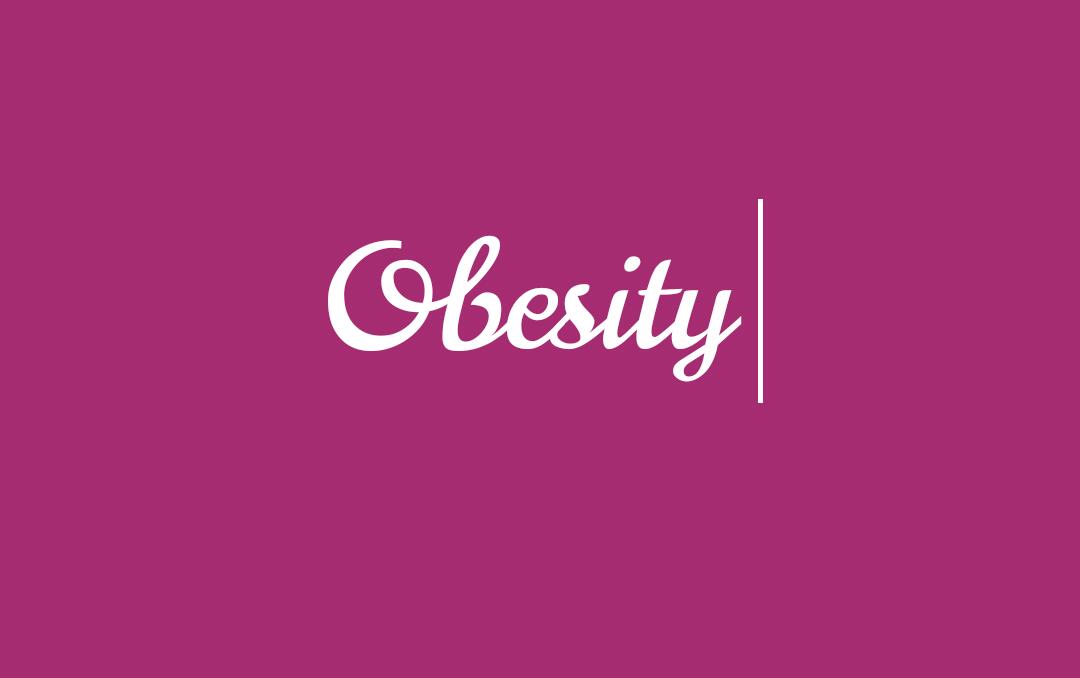OBESITY & ITS HAZARDS
Obesity is as an abnormal growth of the adipose tissue due to an enlargement of fat cell size (hypertrophic obesity) or an increase in fat cell number (hyperplastic obesity) or a combination of both
Overweight is usually due to obesity but can arise from other causes such as abnormal muscle development or fluid retention.
However, obese individuals differ not only in the amount of excess fat that they store, but also in the regional distribution of the fat within the body. The distribution of fat induced by the weight gain affects the risk associated with obesity, and the kind of disease that results. It is useful therefore, to be able to distinguish between those at increased risk as a result of "abdominal fat distribution" or android obesity" from those with the less serious "gynoid" distribution, in which fat is more evenly and peripherally distributed around the body.
CAUSES OF OBESITY
aetiology of obesity is complex and is multiple causation:
AGE: Obesity can occur at any age, and generally increases with age. Infants with excessive weight gain have an increased incidence of obesity in later life.
SEX: Women generally have higher rate of obesity than men. although men may have higher rates of overweight women gain most between 45 and 49 years of age . i.e. at menopausal age. It has been claimed that woman's BMI increases with successive pregnancies.
GENETIC FACTORS: There is a genetic component in the aetiology of obesity. : Obesity frequently runs in families (obese parents frequently having obese children), but this is not necessarily explained solely by the influence of genes. (i)
PHYSICAL INACTIVITY: There is convincing evidence that regular physical activity is protective against unhealthy weight gain
SOCIO-ECONOMIC STATUS: obesity has been found to be more prevalent in lower socio-economic groups
EATING HABITS: Overeating may be a symptom of depression, anxiety, frustration and loneliness in Childhood as it is in adult life.
PSYCHOSOCIAL FACTORS: Psychosocial factors (e.g., emotional disturbances) are deeply involved in the aetiology of obesity. Overeating may be a symptom of depression, anxiety, frustration and loneliness in Childhood as it is in adult life. ENDOCRINE FACTORS: These may be involved in occasional cases, e.g., Cushing's syndrome, growth hormone deficiency.
ALCOHOL: A recent review of studies concluded that the relationship between alcohol consumption and adiposity was generally positive for men and negative for women
EDUCATION: In most affluent societies, there is an inverse relationship between educational level and prevalence of overweight
DRUGS: Use of certain drugs, e.g., cortico-steroids, contraceptives, insulin, ii-adrenergic blockers, etc. can promote weight gain.
Obesity is often expressed in terms of body mass index (BMI)
BMI ( Quetelet’s index) = weight (kgs)/ Height (M2)
Classification
BMI
RISK OF COMORBIDITIES
HAZARDS OF OBESITY
Under weight
< 18.50
Low
Hypoglycemia, giddiness, malaise
Normal range
18.50-24.99
Over weight
_ 25.00
Average
Reproductive abnormalities, PCOD, impaired fertility, low back pain, hypertension (BP), Osteoarthritis, Type 2 Diabetes, dyslipidemia, breathlessness, sleep apnea CHD, Stroke
Pre obese
_ 25.oo-29.99
Increased
Obese class I
30.00-34.99
Moderate
Obese class II
35.00-39.00
severe
Obese Class III
_ 40.00
Very severe
ABDOMINAL (CENTRAL) FAT ULATION ANT) INCRI.ALA RIHK
compared with subcutaneous adipose tissue intra-abdominal adipose tissue has more cells per unit mass, higher blood flow, more glucocorticoid (cortisol) receptors, •ably more androgen (testosterone) receptors. and greater -catecholamine-induced lipolysis.
There is good evidence that abdominal obesity is important in the development of insulin resistance, and in metabolic syndrome (hyperinsulinaemia. dyslipidemia, glucose intolerance. and hypertension) that link obesity with CHD. Premenopausal women have quantitatively more protein lipase (LPL) and higher LPL activity in the Gluteal and femoral subcutaneous regions. which contain fat Cells larger than those in men, but these differences disappear after menopause.
PREVENTION AND CONTROL:
Weight control is widely defined as approaches to maintaining ‘weight within the ‘healthy’ range of BMI. In those who are already over-weight, a reduction of 5-10 per cent of body weight is recommended as an initial goal
DIETARY CHANGES: The following dietary principles apply both to prevention and treatment the proportion of energy-dense foods such as simple carbohydrates and fats should be reduced; the fiber content in the diet should be increased.
• AVOID High calorie diet, fried, spicy food.
• Reduce intake of salt
• Take plenty of water & liquids
• Add fruits & veggies to your diet
• Regular timely meals
INCREASED PHYSICAL ACTIVITY: This is an important part of weight reducing programme. Regular physical exercise is the key to increased energy expenditure.
OTHERS: Appetite suppressing drugs have been tried in the control of obesity.
SURGICAL TREATMENTs: gastric bypass, gastroplasty, jaw-wiring, to eliminate the eating of solid food have all been tried with limited success.
Congratulations @kiran2504! You received a personal award!
Happy Birthday! - You are on the Steem blockchain for 1 year!
Click here to view your Board
Congratulations @kiran2504! You received a personal award!
You can view your badges on your Steem Board and compare to others on the Steem Ranking
Vote for @Steemitboard as a witness to get one more award and increased upvotes!